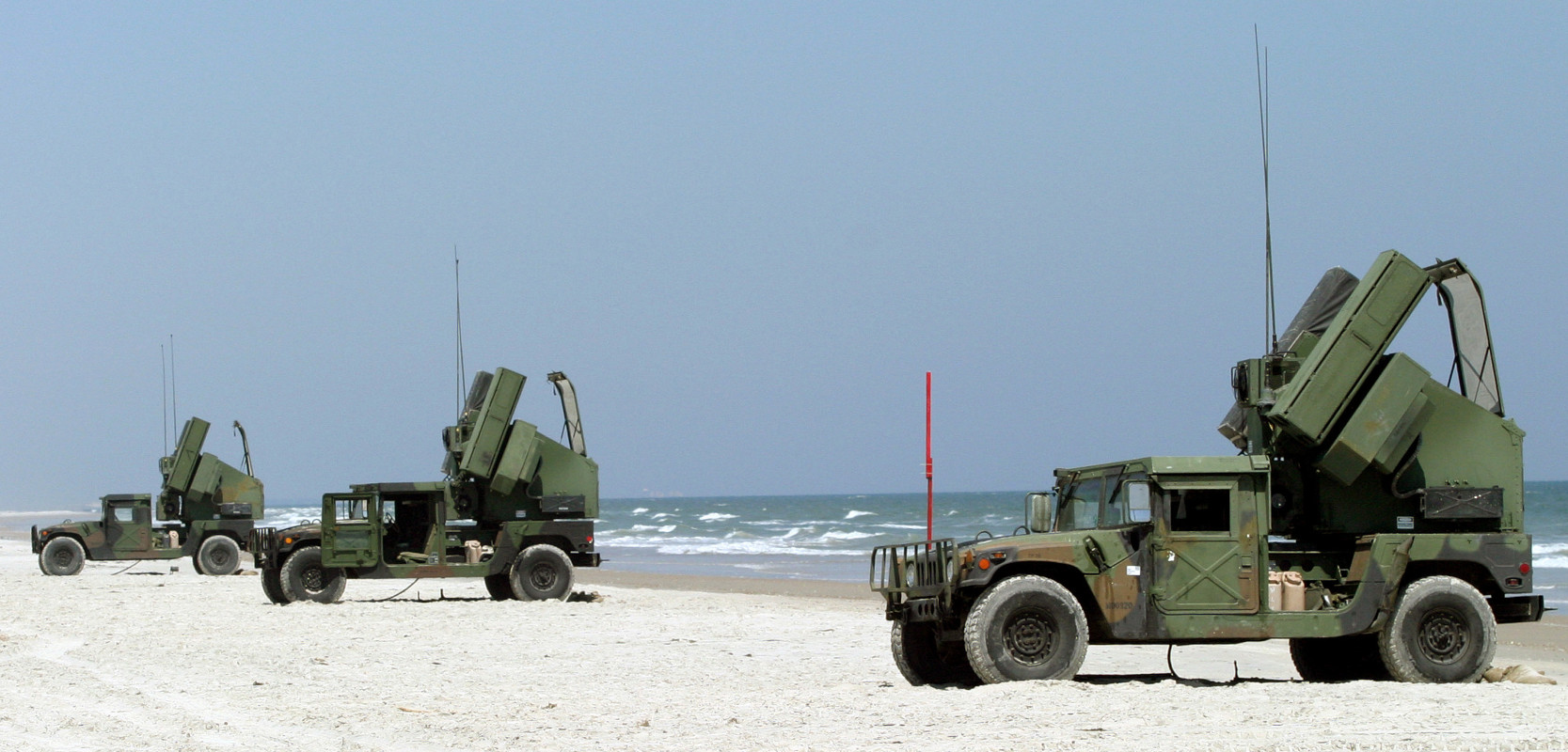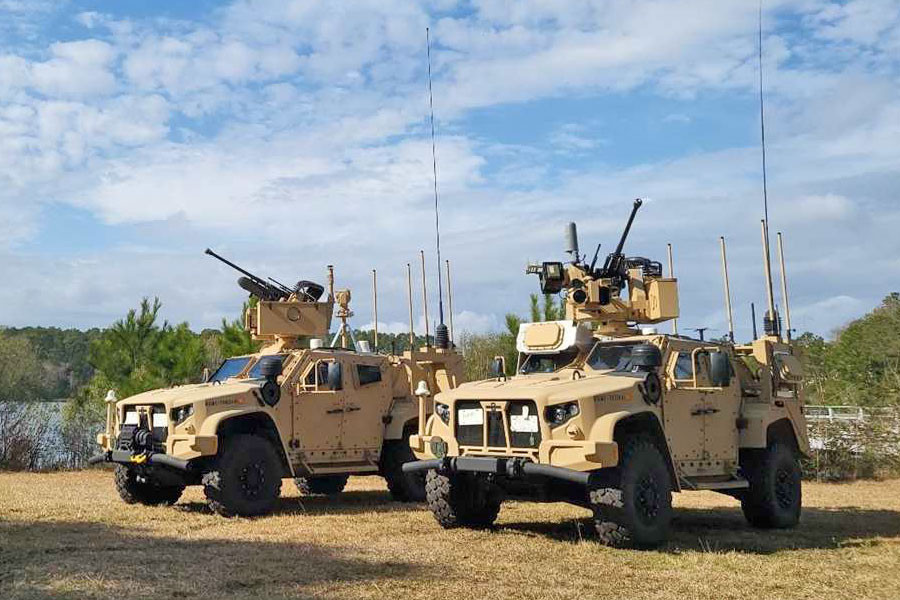The U.S. Marine Corps is in the process of a major expansion of its organic ground-based air and missile defense forces. The total number of air defense batteries within the service is set to increase by more than two-thirds by the end of the decade. Starting just next year, those units will be equipped with a mixture of new medium and short-range capabilities, including a version of Israel’s Iron Dome, with a particular focus on added defenses against drones and cruise missiles.
Marine Col. Mike McCarthy, who runs the aviation enablers branch within the office of the Deputy Commandant for Aviation, provided an update on the service’s air and missile defense plans earlier today at the annual Modern Day Marine exposition.
“Just give you some perspective about kind of where we’re going in ground-based air defense, in 2019, when Force Design [2030] started, we had four air defense batteries the Marine Corps armed with Stinger missiles and machine guns. That was it,” McCarthy said.

Force Design 2030 is the Marine Corps’ current template for a complete restructuring of its forces, which is still ongoing and is centered on supporting new and evolving expeditionary and distributed concepts of operations. McCarthy was also referring here to the mix of Humvee-based Avenger air defense vehicles, armed with heat-seeking short-range Stinger surface-to-air missiles and .50 caliber M3P machine guns, as well as shoulder-fired Stingers, or man-portable air defense systems (MANPADS), that have formed the core of the service’s air defense arsenal for decades now.

“As we approach 2029, we’re going to have 15 batteries of air defense in the Marine Corps, to include the reserve component, and the weapon systems they’re going to employ are night-and-day better than what we had three [to] four years ago,” McCarthy continued.
“Next year, we’re going to field the Medium-Range Intercept Capability [MRIC]” which is “a cruise missile defense system based on the Israeli Iron Dome,” the Marine Colonel added.
MRIC is by far the most substantial forthcoming addition to the Marine Corps’ air defense arsenal. As McCarthy said, it is derived from the Israeli Iron Dome system and utilizes a trailer-based road-mobile launcher. It also fires the same Tamir interceptors as Iron Dome, which use active radar seekers to zero in on their targets and have a very high degree of maneuverability. The missiles also have a two-way data link and proximity-fuzed warhead to improve accuracy and the overall probability of scoring a hit.

While the Marine Corps is acquiring MRIC with a focus on defending against incoming cruise missiles, as an Iron Dome derivative, the system inherently has the ability to engage a broader array of other incoming indirect threats. This includes artillery rockets and shells, as well as drones. Significant upgrades have been made to Iron Dome over the years to expand the breadth of targets it can be employed against, and MRIC could further evolve into an even broader medium-range air defense system.

“Next year, we’ll also see the initial fielding of the Marine Air Defense Integrated System [MADIS],” Col. McCarthy also highlighted today.
A complete MADIS system in its current form consists of two 4×4 Joint Light Tactical Vehicles (JLTV) with similar, but different air defense configurations. One vehicle has a remote weapon station armed with a 30mm automatic cannon capable of firing proximity-fuzed rounds and Stinger missiles. The second vehicle has the same type of remote weapon station, but no Stingers, and has added electronic warfare, electronic support measures, and sensor capabilities, including active electronically-scanned radar arrays (AESAs). Small form factor AESA radars are an increasingly popular component of counter-drone systems, in general.

There is also the “Light” version of MADIS, or L-MADIS, which consists of 4×4 Polaris MRZR all-terrain vehicles equipped with a mix of sensors and electronic warfare jammers. The L-MADIS vehicles can be carried inside the main cabin of an MV-22 Osprey and Col. McCarthy highlighted how this system is ideally suited for supporting smaller echelons, including forces embarked on amphibious warfare ships.

L-MADISs have already been in use for years now and there are now multiple configurations of the system. An L-MADIS buggy, lashed to the deck of the Wasp class amphibious assault ship USS Boxer, was actually used to knock down an Iranian drone that came within “threatening range” of the ship as it transited through the Strait of Hormuz in 2019.

The Marine Corps also previously acquired a predecessor to the larger MADIS based on 4×4 M-ATV mine-resistant vehicles rather than the JLTV and armed with Miniguns mounted in remote weapon stations. Known as Ground Based Air Defense (GBAD) systems, these were deployed operationally on a limited basis in the past.

MADIS and L-MADIS are both primarily geared toward the counter-drone role. MADIS, with its Stinger missiles, also has the ability to be used for more general short-range point air defense. The U.S. Army is also now in the process of developing a more capable replacement for the venerable Stinger that will still be able to use existing launchers, and that could be of interest to the Marines in the future. Newer versions of Stinger have already been developed that are better optimized against drones.

New radars are another important component of the Marine Corps’ future air and missile defense plans, especially when it comes to MRIC. Currently, the service plans to pair MRIC with its existing AN/TPS-80 Ground/Air Task-Oriented Radar (G/ATOR), which is a modern road-mobile multi-purpose AESA radar that can be used for air defense and more general air traffic control purposes. You can read more about G/ATOR here.

Last year, the Marine Corps also awarded a contract to Leidos for the delivery of four prototypes of a new air defense radar called the Medium Range Air Defense Radar (MRADR; pronounced ‘marauder’). Leidos subsidiary Dynetics is leading the development of the MRADR. The Marines have also been exploring Humvee-based mobile radar systems.
The Marine Corps’ focus on cruise missile and drone threats in its new air defense push is hardly surprising.
Near-peer competitors like China and Russia are continuing to develop and field more advanced cruise missiles, including claimed hypersonic types. More and more capable cruise missiles are also proliferating among smaller countries and even non-state actors like Iranian-backed Houthi militants in Yemen.
The threat posed by uncrewed aerial systems has also now fully exploded into the mainstream consciousness, thanks in large part to the conflict in Ukraine. However, as The War Zone has long pointed out, the drone threat, including when it comes to weaponized commercial types, is not new, and is becoming an increasing given in conflicts large and small. The Marines and the rest of the U.S. military continue to very much play catch-up when it comes to addressing this threat through the fielding of systems like MADIS and L-MADIS.
In a future high-end conflict, such as one in the Pacific against the Chinese armed forces, where relatively small groups of Marines may be scattered across a broad area, the need for various tiers of organic defenses against a bevy of air and missile threats will only be magnified. In this context, it is also worth pointing out that MRIC will give the Marine Corps its first medium-range air defense capability of any kind since the service retired its HAWK surface-to-air missiles in the 1990s.

These are all realities that the Marine Corps is not alone in facing. The U.S. Army is also in the process of a major expansion of its air and missile defense capacity in response to the same kinds of threats.
If the Marine Corps’ current plans remain unchanged, the service will close out the decade with a major increase in its air and missile defense capabilities and a significantly enlarged force structure to match.
Contact the author: joe@twz.com
